Why you can trust TechRadar
I will confess to being intrigued as I set about putting the ThinkPad 10 through its paces. I knew that gaming would be out of the question, but what kind of numbers was Intel's new chip capable of throwing off? Here is the tale of the tape:
Benchmarks
- PCMark 8 Creative: 929; Work: 1,553
- PCMark 8 Battery: 4 hours and 34 minutes
- Cinebench CPU: 2,918 (1,202 with 1x CPU)
- 3DMark: Ice Storm: 9,072; Cloud Gate: 736
Fine, so it didn't exactly shatter any TechRadar benchmarking records. It is not a direct comparison, but similarly priced laptops tend to put up performance numbers that are about two to three times as fast.
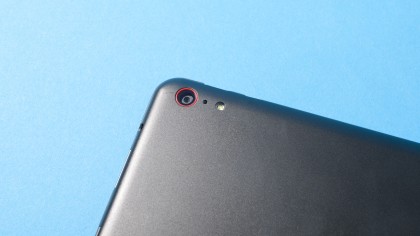
This device also suffers against the Surface Pro 3 for the same reasons. That tablet's dual-core 1.9GHz Core i5-4300U and 8GB of system memory help it to double and in some cases triple the performance of the ThinkPad 10 in most tests. On the flip side, the presence of Intel's Atom processor in this tablet enables it to literally double the battery life of Microsoft's latest pro tablet.
That said, this delta is acceptable because this is a half-inch thick tablet capable of running full-fledged Windows. Also, the ThinkPad 10 does not feel pokey in the least, which stands in direct contrast to last generation's Atom-based Ultrabooks and other devices.
Power for the real world
In day-to-day use, I found myself marveling at how snappy everything felt. I loaded the device up with Dropbox and Evernote, multiple email accounts, and my usual assortment of software, and was pleased to find that the ThinkPad 10 handled everything with ease. Moving between open apps felt just as it fast as it does on any other system, and I rarely experienced slowdown while online.
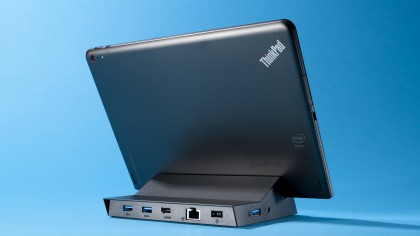
Battery performance also impressed. PCMark's fairly rigorous battery test stresses all aspects of the system – display, processor, and memory – and the ThinkPad 10 still put up a number that far exceeds most other laptops we have tested. In real-life usage, this is easily an 8 hour laptop; I verified this on a business trip where I worked on it all day without needing to charge.
In fact, the only real performance concern I experienced with this ThinkPad was that it did feel like I was bumping up against the ThinkPad's memory ceiling a little too frequently for comfort. The pre-installed Norton Anti-Virus suite appeared to confirm this: I saw frequent high memory usage warnings during daily use. Despite this, the performance rarely lagged or stuttered.. Based on my experience, I highly recommend going with 4GB rather than just 2GB.
Over the course of my two-week test, I found myself thinking that 1920 x 1200 is actually an ideal resolution for Windows – right now, at least. Too many of the ultra-HD screens found on systems like the Lenovo Yoga 2 Pro are shackled by incompatibilities with legacy Windows software, with the end result being that menus and in-app windows are drawn at impossibly small sizes. 1920 x 1200 is such a small leap in resolution that none of these resolution problems presented themselves here.
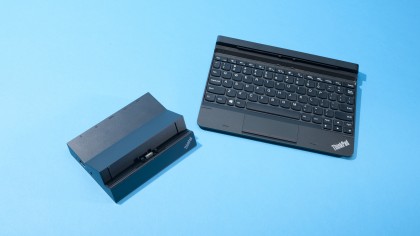
The fact that Lenovo could pack this much power into a $600 tablet is most impressive, particularly when you consider that this configuration is packed into an ultra-thin frame that eliminates all the cooling concerns of most full-sized laptops. (During testing, I found myself shocked at the lack of heat coming off of it.)
Accessories make the tablet
One of the ThinkPad 10's main selling points is the host of accessories that can be purchased along with the tablet itself. Lenovo's goal here is to allow a variety of users the ability to transform this system into a more fully realized portable PC, and you can do so in a variety of ways.
TechRadar's review unit came with the following optional add-ons, which we were able to put through their paces in real-world testing:
Ultrabook keyboard
This keyboard cover ($119, £69, AU$127) essentially converts the ThinkPad 10 into an Ultrabook. Simply insert the tablet into a magnetic port, which snaps into place. The absence of a hinge can be initially disconcerting, because you're not opening the ThinkPad 10 in this form so much as assembling it. And while we never witnessed or caused the two parts to fly apart while open or closed, it definitely feels less secure than expected.
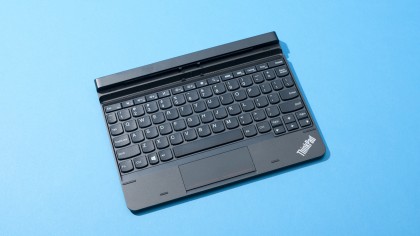
Like so many ThinkPad keyboards, the typing surface is highly responsive and capable of supporting long stretches of text input; superior in all regards. My only complaint is that because it is not self-powered – it trickles power from the tablet itself – the keyboard lacks a proper backlight, which makes it difficult to type in the dark.
Unfortunately, the high-quality keyboard is compromised by a touchpad that is far less responsive. Performing simple actions like click-drags and scrolling often requires an extra touch to work properly. Thankfully, you can just use the touch screen surface itself for many of the same tasks.
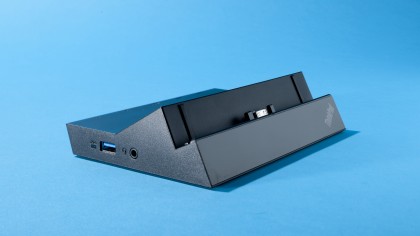
Despite these flaws, the keyboard itself is of high enough quality that I consider it an essential purchase for anyone planning to work with Microsoft Office or any other productivity software.
ThinkPad tablet dock
In my mind, this dock ($129, £75, about AU$137) is the unsung hero of this entire ecosystem, and allows you to literally transform the ThinkPad 10 into a desktop. The dock (which also charges the tablet) features keyboard, mouse, and video ports, and also has three USB 3.0 ports, a dedicated Ethernet jack, and an HDMI-out port. You can even use one of the USB ports to power a connected device when the ThinkPad is not connected.
The good news is that it all works, and quite well at that. This dock also provides one of the most clear-cut advantages that Windows tablets have over Android tablets and the iPad. For many PC users, the ability to work on a tablet in a dedicated desktop mode with fully-functioning Office with full mouse and keyboard support will trump everything else.
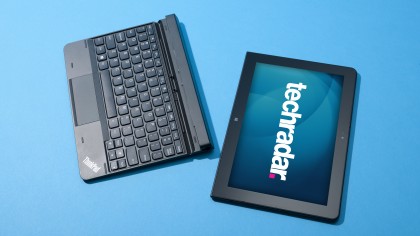
Other ThinkPad 10 peripherals
Our review unit did not come with the below peripherals, so we were not able to test them, but they are described below:
- Quickshot Cover: Described in our initial preview of the ThinkPad 10, this cover ($45, about £26, AU$48) provides Smart Cover-like features, and also functions as a stand. As an added bonus, it allows you to fold down a flap in the top right corner in order to activate the camera.
- ThinkPad 10 Touch Case: This case ($119, £69, about AU$127) comes with a slim, integrated keyboard and built-in trackpad.
- ThinkPad 10 Protector Case: This ruggedized case ($69, about £40, AU$74) is made of silicon rubber and features a screen protector and cut-outs for accessing the ports. It also comes with a hand-strap for more industrial usage.
